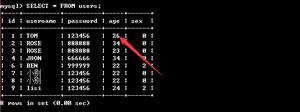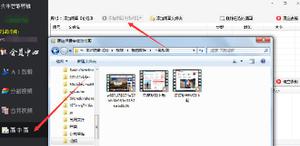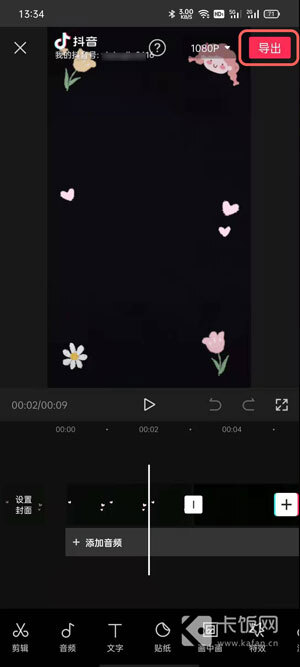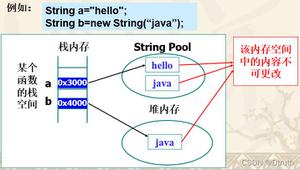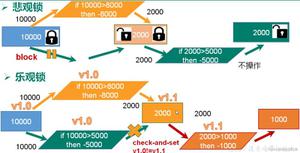如何在不使用java中的“剪辑”之前循环播放声音
首先,感谢大家帮助我解决以前的问题。如何在不使用java中的“剪辑”之前循环播放声音
在下面的代码中,我选择两个频率并将它们写入.wav格式,以在用户给定的特定时间在Windows Media Player中运行它。 我想要的是了解如何循环这些频率在指定时间内交替运行,如救护车的警笛声,并且在我的程序中,两个频率都只播放一次。例如,如果我将时间指定为10秒,那么两个频率一次运行5秒。但我想要的是第一个频率运行一两秒钟(如用户指定),然后是第二个频率运行相似的秒,然后再运行第一个频率,它应该继续运行直到指定的时间。
import java.io.ByteArrayInputStream; import java.io.File;
import java.io.IOException;
import java.util.Scanner;
import javax.sound.sampled.AudioFileFormat;
import javax.sound.sampled.AudioFormat;
import javax.sound.sampled.AudioInputStream;
import javax.sound.sampled.AudioSystem;
import javax.sound.sampled.LineUnavailableException;
public class AudioWrite2New {
public static void main(String[] args) throws IOException, InterruptedException, LineUnavailableException {
Scanner in = new Scanner(System.in);
final double SAMPLING_RATE = 44100; // Audio sampling rate
int time = in.nextInt(); //Time specified by user in seconds
// int time2 = in.nextByte();
int frequency1 = in.nextInt(); //Frequency1 specified by the user in hz
int frequency2 = in.nextInt(); //Frequency2 specified by the user in hz
float buffer[] = new float[(int) (time/2 * SAMPLING_RATE)]; //Size of buffer[], which in case of 10 seconds is 441000
float buffer1[] = new float[(int) (time/2 * SAMPLING_RATE)]; //Size of buffer1[], which in case of 10 seconds is 441000
for (int sample = 0; sample < buffer.length; sample++) {
double cycle = sample/SAMPLING_RATE; //Fraction of cycle between samples
buffer[sample] = (float) (Math.sin(2 * Math.PI * frequency1 * cycle));
//buffer1[sample] = (float) (Math.sin(2 * Math.PI * frequency2 * cycle));
}
for (int sample = 0; sample < buffer1.length; sample++) {
double cycle = sample/SAMPLING_RATE; //Fraction of cycle between samples
//buffer[sample] = (float) (Math.sin(2 * Math.PI * frequency1 * cycle));
buffer1[sample] = (float) (Math.sin(2 * Math.PI * frequency2 * cycle));
}
//System.out.println(buffer[1]);
byte byteBuffer[] = new byte[buffer.length * 2]; //Size of byteBuffer, in this case 882000
byte byteBuffer1[] = new byte[buffer1.length * 2]; //Size of byteBuffer, in this case 882000
int count = 0;
for (int i = 0; i < byteBuffer.length; i++) {
final int x = (int) (buffer[count++] * Short.MAX_VALUE);
byteBuffer[i++] = (byte) x;
byteBuffer[i] = (byte) (x/256);
}
count = 0;
for (int i = 0; i < byteBuffer1.length; i++) {
final int x = (int) (buffer1[count++] * Short.MAX_VALUE);
byteBuffer1[i++] = (byte) x;
byteBuffer1[i] = (byte) (x/256);
}
//For merging the two frequencies
byte[] merge = new byte[byteBuffer.length + byteBuffer1.length];
System.arraycopy(byteBuffer, 0, merge, 0, byteBuffer.length);
System.arraycopy(byteBuffer1, 0, merge, byteBuffer.length, byteBuffer1.length);
File out = new File("E:/RecordAudio17.wav"); //The path where user want the file data to be written
//Construct an audio format, using 44100hz sampling rate, 16 bit samples, mono, and big
// endian byte ordering
AudioFormat format = new AudioFormat((float) SAMPLING_RATE, 16, 1, true, false);
// It uses bytebuffer as its buffer array that contains bytes that may be read from the stream.
ByteArrayInputStream bais = new ByteArrayInputStream(merge);
//Constructs an audio input stream that has the requested format and length in sample frames, using audio data
//from the specified input stream.
AudioInputStream audioInputStream = new AudioInputStream(bais, format, buffer1.length + buffer.length);
//Writes a stream of bytes representing an audio file of the specified file type to the external file provided.
AudioSystem.write(audioInputStream, AudioFileFormat.Type.WAVE, out);
audioInputStream.close(); //Closes this audio input stream
}
}
正如我在Java和JavaSounds挺新的,所以有时我会问一些愚蠢的或不相关的问题。所以请耐心等待,因为这是我学习的唯一途径。 谢谢。
回答:
我解决了它。尽管我需要处理一小部分内容。我会尽快更新它。
import java.io.ByteArrayInputStream; import java.io.File;
import java.io.IOException;
import java.util.Scanner;
import javax.sound.sampled.AudioFileFormat;
import javax.sound.sampled.AudioFormat;
import javax.sound.sampled.AudioInputStream;
import javax.sound.sampled.AudioSystem;
import javax.sound.sampled.LineUnavailableException;
public class AudioWrite2New {
public static void main(String[] args) throws IOException, InterruptedException, LineUnavailableException {
Scanner in = new Scanner(System.in);
final double SAMPLING_RATE = 44100; // Audio sampling rate
int time = in.nextInt(); //Time specified by user in milliseconds
int time2 = in.nextByte();
int frequency1 = in.nextInt(); //Frequency1 specified by the user in hz
int frequency2 = in.nextInt(); //Frequency2 specified by the user in hz
float buffer[] = new float[((int) (time * SAMPLING_RATE))/1000]; //Size of buffer[], which in case of 10 seconds is 441000
float buffer1[] = new float[((int) (time * SAMPLING_RATE))/1000]; //Size of buffer1[], which in case of 10 seconds is 441000
//for (int a = 1; a <= time2/2; a++) {
for (int sample = 0; sample < buffer.length; sample++) {
double cycle = sample/SAMPLING_RATE; //Fraction of cycle between samples
buffer[sample] = (float) (Math.sin(2 * Math.PI * frequency1 * cycle));
//buffer1[sample] = (float) (Math.sin(2 * Math.PI * frequency2 * cycle));
}
for (int sample = 0; sample < buffer1.length; sample++) {
double cycle = sample/SAMPLING_RATE; //Fraction of cycle between samples
//buffer[sample] = (float) (Math.sin(2 * Math.PI * frequency1 * cycle));
buffer1[sample] = (float) (Math.sin(2 * Math.PI * frequency2 * cycle));
}
//System.out.println(buffer[1]);
byte byteBuffer[] = new byte[buffer.length * 2]; //Size of byteBuffer, in this case 882000
byte byteBuffer1[] = new byte[buffer1.length * 2]; //Size of byteBuffer, in this case 882000
int count = 0;
for (int i = 0; i < byteBuffer.length; i++) {
final int x = (int) (buffer[count++] * Short.MAX_VALUE);
byteBuffer[i++] = (byte) x;
byteBuffer[i] = (byte) (x/256);
}
count = 0;
for (int i = 0; i < byteBuffer1.length; i++) {
final int x = (int) (buffer1[count++] * Short.MAX_VALUE);
byteBuffer1[i++] = (byte) x;
byteBuffer1[i] = (byte) (x/256);
}
int iterations = (1000*time2)/(2*time);
byte[] merge = new byte[iterations*(byteBuffer.length + byteBuffer1.length)];
for (int i = 0; i<iterations; i++)
{
//arraycopy(Object src, int srcPos, Object dest, int destPos, int length)
//For merging the two frequencies
System.arraycopy(byteBuffer, 0, merge, 0+i*(byteBuffer.length + byteBuffer1.length), byteBuffer.length);
System.arraycopy(byteBuffer1, 0, merge, byteBuffer.length+i*(byteBuffer.length + byteBuffer1.length), byteBuffer1.length);
}
File out = new File("E:/RecordAudio17.wav"); //The path where user want the file data to be written
//Construct an audio format, using 44100hz sampling rate, 16 bit samples, mono, and big
// endian byte ordering
AudioFormat format = new AudioFormat((float) SAMPLING_RATE, 16, 1, true, false);
// It uses bytebuffer as its buffer array that contains bytes that may be read from the stream.
ByteArrayInputStream bais = new ByteArrayInputStream(merge);
//Constructs an audio input stream that has the requested format and length in sample frames, using audio data
//from the specified input stream.
AudioInputStream audioInputStream = new AudioInputStream(bais, format, (buffer1.length + buffer.length) * (time2/4));
//Writes a stream of bytes representing an audio file of the specified file type to the external file provided.
AudioSystem.write(audioInputStream, AudioFileFormat.Type.WAVE, out);
//}
//audioInputStream.close(); //Closes this audio input stream
}
}
以上是 如何在不使用java中的“剪辑”之前循环播放声音 的全部内容, 来源链接: utcz.com/qa/266538.html


